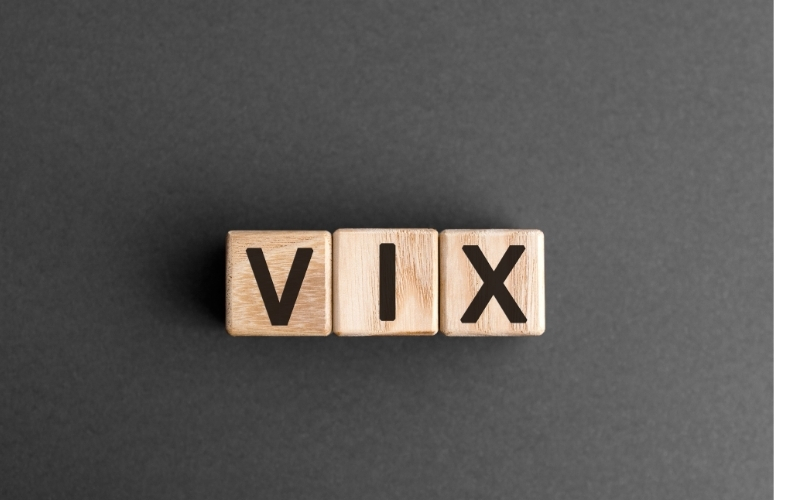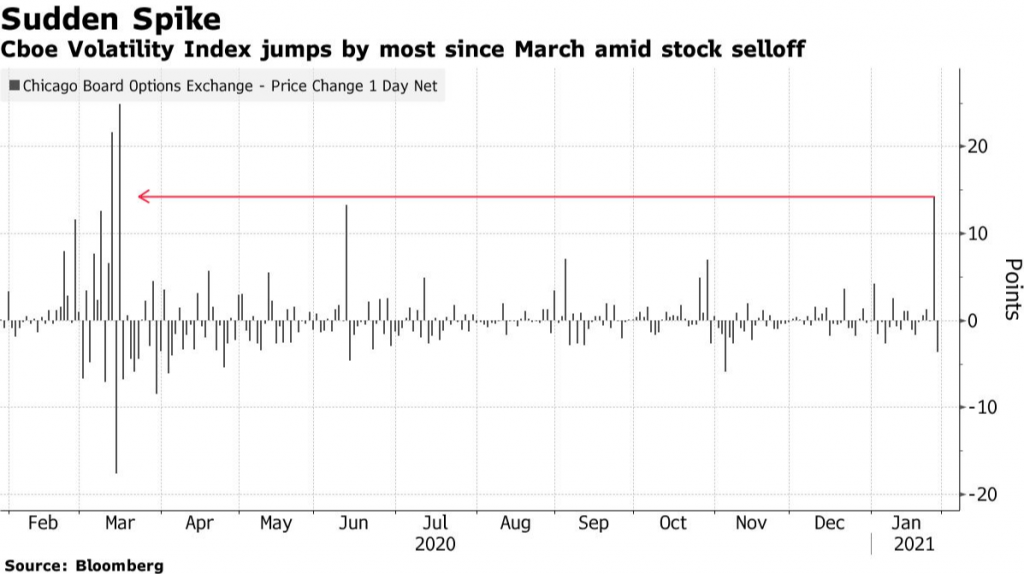
The Cboe Volatility Index (VIX) rose to 37 on Wednesday, the biggest one-day move since the market crash in March. According to Bloomberg, VIX’s futures curve flipped to “backwardation,” implying that investors expect more volatility in the near-term.

- The bulk of VIX’S Wednesday gain came in after-hours trading when Tesla Inc., Apple Inc., and Facebook Inc. all fell after reporting results.
- VIX, which measures the 30-day implied volatility of the S&P 500, rose as the Index suffered the biggest declines on Wednesday since October as retail trading frenzy and fears over economic recovery sparked a wave of selling
- Before S&P 500 selloffs, the implied volatility was still above its decade average amid concerns of vaccine rollouts and technical forces such as increasing buying of call options.
- Analysts also associate the VIX rise with the imbalance between supply and demand.
Volatility Index is currently declining. VIX is down 25.58%








Leave a Reply